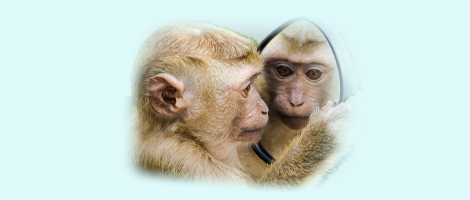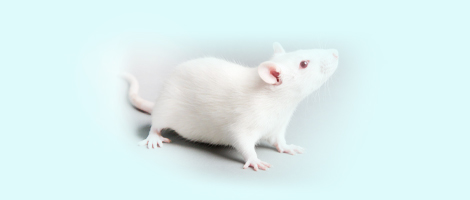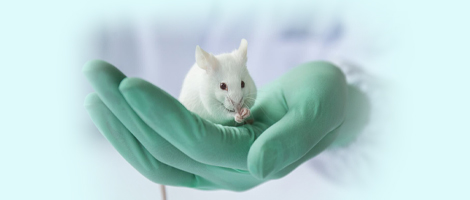













实验动物与比较医学 ›› 2023, Vol. 43 ›› Issue (2): 156-162.DOI: 10.12300/j.issn.1674-5817.2022.094
收稿日期:2022-06-29
修回日期:2022-09-22
出版日期:2023-04-25
发布日期:2023-04-25
通讯作者:
史仍飞(1976—),男,教授, 博士生导师,研究方向:运动生物化学与运动营养。E-mail: rfshi@sus.edu.cn。ORCID:0000-0002-8310-6526作者简介:尹丹阳(1991—),女,硕士研究生,研究方向:运动生物化学与运动营养。E-mail:greenyin@vip.qq.com
基金资助:
Danyang YIN( ), Yi HU, Rengfei SHI(
), Yi HU, Rengfei SHI( )(
)( )
)
Received:2022-06-29
Revised:2022-09-22
Published:2023-04-25
Online:2023-04-25
Contact:
SHI Rengfei (ORCID: 0000-0002-8310-6526), E-mail: rfshi@sus.edu.cn摘要:
随着全球老龄化日益严重,衰老相关问题成了健康领域的一个研究热点。近年来,动物衰老模型得到广泛开发与应用,在衰老机制研究中具有重要意义。其中,线虫和果蝇等寿命较短的动物在衰老研究中具有天然优势;各类大鼠、小鼠衰老模型被用于多种衰老研究;同时,非洲青鳉鱼等新型动物衰老模型也相继得以开发应用。本文回顾了目前在衰老研究中使用的主要动物模型,并对各模型的建立方法、模型成功与否的评价指标、优缺点进行分析,以期为相关研究提供参考。
中图分类号:
尹丹阳,胡怡,史仍飞. 动物衰老模型的研究进展[J]. 实验动物与比较医学, 2023, 43(2): 156-162. DOI: 10.12300/j.issn.1674-5817.2022.094.
Danyang YIN,Yi HU,Rengfei SHI. Advances in Animal Aging Models[J]. Laboratory Animal and Comparative Medicine, 2023, 43(2): 156-162. DOI: 10.12300/j.issn.1674-5817.2022.094.
动物 Animal | 模型 Model | 一般寿命 Lifespan | 模型建立方法 Establishment method | 衰老评价指标 Evaluation index | 优点 Advantage | 缺点 Disadvantage |
|---|---|---|---|---|---|---|
线虫 Caenorhabditis Elegans | 自然衰老模型 | 1个月[ | 实验环境下可观察其完整生命周期;可进行基因干预 | 咽部/头部组织减少,体壁肌肉组织减少,肌团密度减少;身体运动逐渐减少,最大速度下降,趋化反应减少;代谢率下降;生殖细胞少,生产后代数量减少;脂褐质积累,DNA损伤积累,羰基含量增加,卵黄蛋白积累,蛋白酪氨酸激酶活性下降,溶酶体水解酶增加 | 建模快;许多衰老表型与人类相似 | 缺乏特定器官和系统 |
果蝇 Drosophila Melanogaster | 自然衰老模型 | 3个月[ | 实验环境下可观察其完整生命周期;可进行基因干预 | 体质量和胸腔体积减少;活动减少,攀爬和飞行减少,拍打翅膀频率减少;代谢率下降;生殖能力下降;DNA损伤积累,线粒体功能障碍,脂褐素和过氧化物积累 | 建模快;有接近高等脊椎动物的特征 | 缺乏特定器官和系统;缺乏干细胞而没有再生能力 |
斑马鱼 Danio Rerio | 自然衰老模型 | 36~42月[ | 实验环境下可观察其完整生命周期 | 脊柱弯曲,肌肉退化;游泳能力下降;生殖能力下降;视网膜色素上皮中Drusen样病变;SA-β-gal染色增加,脂褐素积累,肌肉中氧化蛋白增加,端粒缩短,线粒体膜成分变化,无症状细胞内胞嘧啶甲基化减少 | 建模快;实验成本较低,胚胎产生数量多 | 作为鱼类,缺少特定器官和系统 |
非洲青鳉鱼 African turquoise killifish | 基因组编辑衰老模型 | 9~26周[ | 通过CRISPR/Cas9基因组编辑,生成基因编辑胚胎,并培育至成年 | 脊柱弯曲,颜色消退,体型变小;生育能力下降;运动/活动减少;认知障碍;脂褐素积累,细胞凋亡增加,端粒缩短,线粒体损伤,神经变性,鳍再生减少 | 基因改造快速高效,建模快;作为脊椎动物与人类更为相似 | 作为鱼类,缺少特定器官和系统 |
小鼠 Mouse | 自然衰老模型 | 2~4年[ | 自然生长至衰老阶段 | 被毛无光泽,脱毛,脊柱弯曲;行动迟缓,活动量减少;SA-β-gal染色增加;衰老相关基因的表达增加 | 呈现自然衰老特征 | 建模时间长 |
| D-半乳糖诱导衰老模型 | 注射1月后提早衰老[ | 定期定量注射D-半乳糖 | 骨骼肌的肌质/体质比、横截面积和纤维直径显著降低;SA-β-gal染色增加;衰老相关基因的表达增加 | 建模时间相对较短,重复性好,存活率较高 | 免疫生化指标与自然衰老小鼠存在差异 | |
快速老化模型 | 1年左右[ | 日本京都大学研究人员培育的SAMP快速老化小鼠 | 被毛无光泽,脱毛,皮肤溃疡,脊柱弯曲;行动迟缓,活动量减少;学习记忆力障碍;增龄性骨质疏松;衰老相关生化指标变化 | 缩短衰老周期;衰老症状与自然衰老小鼠一致 | 维系成本较高 | |
基因衰老模型 | 不同敲除模型有差异 | p21和p53基因敲除;P16基因敲除 | 被毛无光泽,皮肤弹性下降,消瘦;学习记忆力下降;行动力下降,运动协调能力下降;衰老相关生化指标变化 | 特异性敲除基因,可研究单个基因对衰老的影响 | 与自然衰老有差异;成本高 | |
大鼠 Rat | D-半乳糖诱导衰老模型 | 2.5~3年 | 定期定量注射D-半乳糖 | 被毛光泽和皮肤弹性下降,形体消瘦;运动协调性、抗疲劳特性和耐力下降;学习和记忆能力下降;生化指标和神经化学指标出现衰老性变化 | 实验大鼠在行为学和形态学上与人类自然衰老相似 | 建模时间较长 |
表1 常见衰老动物模型的建立方法、评价指标及优缺点
Table 1 Establishment methods, evaluation indexes, advantages and disadvantages of common aging animal models
动物 Animal | 模型 Model | 一般寿命 Lifespan | 模型建立方法 Establishment method | 衰老评价指标 Evaluation index | 优点 Advantage | 缺点 Disadvantage |
|---|---|---|---|---|---|---|
线虫 Caenorhabditis Elegans | 自然衰老模型 | 1个月[ | 实验环境下可观察其完整生命周期;可进行基因干预 | 咽部/头部组织减少,体壁肌肉组织减少,肌团密度减少;身体运动逐渐减少,最大速度下降,趋化反应减少;代谢率下降;生殖细胞少,生产后代数量减少;脂褐质积累,DNA损伤积累,羰基含量增加,卵黄蛋白积累,蛋白酪氨酸激酶活性下降,溶酶体水解酶增加 | 建模快;许多衰老表型与人类相似 | 缺乏特定器官和系统 |
果蝇 Drosophila Melanogaster | 自然衰老模型 | 3个月[ | 实验环境下可观察其完整生命周期;可进行基因干预 | 体质量和胸腔体积减少;活动减少,攀爬和飞行减少,拍打翅膀频率减少;代谢率下降;生殖能力下降;DNA损伤积累,线粒体功能障碍,脂褐素和过氧化物积累 | 建模快;有接近高等脊椎动物的特征 | 缺乏特定器官和系统;缺乏干细胞而没有再生能力 |
斑马鱼 Danio Rerio | 自然衰老模型 | 36~42月[ | 实验环境下可观察其完整生命周期 | 脊柱弯曲,肌肉退化;游泳能力下降;生殖能力下降;视网膜色素上皮中Drusen样病变;SA-β-gal染色增加,脂褐素积累,肌肉中氧化蛋白增加,端粒缩短,线粒体膜成分变化,无症状细胞内胞嘧啶甲基化减少 | 建模快;实验成本较低,胚胎产生数量多 | 作为鱼类,缺少特定器官和系统 |
非洲青鳉鱼 African turquoise killifish | 基因组编辑衰老模型 | 9~26周[ | 通过CRISPR/Cas9基因组编辑,生成基因编辑胚胎,并培育至成年 | 脊柱弯曲,颜色消退,体型变小;生育能力下降;运动/活动减少;认知障碍;脂褐素积累,细胞凋亡增加,端粒缩短,线粒体损伤,神经变性,鳍再生减少 | 基因改造快速高效,建模快;作为脊椎动物与人类更为相似 | 作为鱼类,缺少特定器官和系统 |
小鼠 Mouse | 自然衰老模型 | 2~4年[ | 自然生长至衰老阶段 | 被毛无光泽,脱毛,脊柱弯曲;行动迟缓,活动量减少;SA-β-gal染色增加;衰老相关基因的表达增加 | 呈现自然衰老特征 | 建模时间长 |
| D-半乳糖诱导衰老模型 | 注射1月后提早衰老[ | 定期定量注射D-半乳糖 | 骨骼肌的肌质/体质比、横截面积和纤维直径显著降低;SA-β-gal染色增加;衰老相关基因的表达增加 | 建模时间相对较短,重复性好,存活率较高 | 免疫生化指标与自然衰老小鼠存在差异 | |
快速老化模型 | 1年左右[ | 日本京都大学研究人员培育的SAMP快速老化小鼠 | 被毛无光泽,脱毛,皮肤溃疡,脊柱弯曲;行动迟缓,活动量减少;学习记忆力障碍;增龄性骨质疏松;衰老相关生化指标变化 | 缩短衰老周期;衰老症状与自然衰老小鼠一致 | 维系成本较高 | |
基因衰老模型 | 不同敲除模型有差异 | p21和p53基因敲除;P16基因敲除 | 被毛无光泽,皮肤弹性下降,消瘦;学习记忆力下降;行动力下降,运动协调能力下降;衰老相关生化指标变化 | 特异性敲除基因,可研究单个基因对衰老的影响 | 与自然衰老有差异;成本高 | |
大鼠 Rat | D-半乳糖诱导衰老模型 | 2.5~3年 | 定期定量注射D-半乳糖 | 被毛光泽和皮肤弹性下降,形体消瘦;运动协调性、抗疲劳特性和耐力下降;学习和记忆能力下降;生化指标和神经化学指标出现衰老性变化 | 实验大鼠在行为学和形态学上与人类自然衰老相似 | 建模时间较长 |
| 1 | HARPER S, KLIEN E. Forty years of global action on ageing: what has been achieved? [J]. J Popul Ageing, 2022, 15(1):1-5. DOI:10.1007/s12062-022-09362-w . |
| 2 | IZQUIERDO M, MERCHANT R A, MORLEY J E, et al. International exercise recommendations in older adults (ICFSR): expert consensus guidelines[J]. J Nutr Health Aging, 2021, 25(7):824-853. DOI:10.1007/s12603-021-1665-8 . |
| 3 | BILSKI J, PIERZCHALSKI P, SZCZEPANIK M, et al. Multifactorial mechanism of sarcopenia and sarcopenic obesity. Role of physical exercise, microbiota and myokines[J]. Cells, 2022, 11(1):160. DOI:10.3390/cells11010160 . |
| 4 | KRITSILIS M, RIZOU S V, KOUTSOUDAKI P N, et al. Ageing, cellular senescence and neurodegenerative disease[J]. Int J Mol Sci, 2018, 19(10): 2937. DOI:10.3390/ijms19102937 . |
| 5 | 赵凡凡, 周玉枝, 高丽, 等. D-半乳糖致衰老大鼠模型的研究进展[J]. 药学学报, 2017, 52(3):347-354. DOI:10.16438/j.0513-4870.2016-0696 . |
| ZHAO F F, ZHOU Y Z, GAO L, et al. Advances in the study of the rat model of aging induced by D-galactose[J]. Acta Pharmaceutica Sinica, 2017, 52(3):347-354. | |
| 6 | BRENNER S. The genetics of Caenorhabditis elegans[J]. Genetics, 1974, 77(1):71-94. DOI:10.1093/genetics/77.1.71 . |
| 7 | COLLINS J J, HUANG C, HUGHES S, et al. The measurement and analysis of age-related changes in Caenorhabditis elegans[J]. WormBook, 2008:1-21. DOI:10.1895/wormbook. 1.137.1 . |
| 8 | PIPER M D W, PARTRIDGE L. Drosophila as a model for ageing[J]. Biochim Biophys Acta Mol Basis Dis, 2018, 1864(9 Pt A):2707-2717. DOI:10.1016/j.bbadis.2017.09.016 . |
| 9 | CHINTAPALLI V R, WANG J, DOW J A T. Using FlyAtlas to identify better Drosophila melanogaster models of human disease[J]. Nat Genet, 2007, 39(6):715-720. DOI:10.1038/ng2049 . |
| 10 | DEMONTIS F, PERRIMON N. FOXO/4E-BP signaling in Drosophila muscles regulates organism-wide proteostasis during aging[J]. Cell, 2010, 143(5):813-825. DOI:10.1016/j.cell.2010.10.007 . |
| 11 | OCORR K, PERRIN L, LIM H Y, et al. Genetic control of heart function and aging in Drosophila[J]. Trends Cardiovasc Med, 2007, 17(5):177-182. DOI:10.1016/j.tcm.2007.04.001 . |
| 12 | TISSENBAUM H A. Using C. elegans for aging research[J]. Invertebr Reprod Dev, 2015, 59(Sup1):59-63. DOI:10.1080/07924259.2014.940470 . |
| 13 | KISHI S, UCHIYAMA J, BAUGHMAN A M, et al. The zebrafish as a vertebrate model of functional aging and very gradual senescence[J]. Exp Gerontol, 2003, 38(7):777-786. DOI:10.1016/s0531-5565(03)00108-6 . |
| 14 | GILBERT M J H, ZERULLA T C, TIERNEY K B. Zebrafish (Danio rerio) as a model for the study of aging and exercise: physical ability and trainability decrease with age[J]. Exp Gerontol, 2014, 50:106-113. DOI:10.1016/j.exger.2013.11.013 . |
| 15 | KIKUCHI K. Dedifferentiation, transdifferentiation, and proliferation: mechanisms underlying cardiac muscle regeneration in zebrafish[J]. Curr Pathobiol Rep, 2015, 3(1):81-88. DOI:10.1007/s40139-015-0063-5 . |
| 16 | ANCHELIN M, ALCARAZ-PÉREZ F, MARTÍNEZ C M, et al. Premature aging in telomerase-deficient zebrafish[J]. Dis Model Mech, 2013, 6(5):1101-1112. DOI:10.1242/dmm.011635 . |
| 17 | GENADE T, BENEDETTI M, TERZIBASI E, et al. Annual fishes of the genus Nothobranchius as a model system for aging research[J]. Aging Cell, 2005, 4(5):223-233. DOI:10.1111/j.1474-9726.2005.00165.x . |
| 18 | VALENZANO D R, TERZIBASI E, GENADE T, et al. Resveratrol prolongs lifespan and retards the onset of age-related markers in a short-lived vertebrate[J]. Curr Biol, 2006, 16(3):296-300. DOI:10.1016/j.cub.2005.12.038 . |
| 19 | GEYFMAN M, ANDERSEN B. Clock genes, hair growth and aging (Albany NY)[J]. Aging, 2010, 2(3):122-128. DOI:10.18632/aging.100130 . |
| 20 | HARTMANN N, REICHWALD K, LECHEL A, et al. Telomeres shorten while Tert expression increases during ageing of the short-lived fish Nothobranchius furzeri[J]. Mech Ageing Dev, 2009, 130(5):290-296. DOI:10.1016/j.mad.2009.01.003 . |
| 21 | HAREL I, BENAYOUN B A, MACHADO B, et al. A platform for rapid exploration of aging and diseases in a naturally short-lived vertebrate[J]. Cell, 2015, 160(5):1013-1026. DOI:10.1016/j.cell.2015.01.038 . |
| 22 | HU C K, BRUNET A. The African turquoise killifish: a research organism to study vertebrate aging and diapause[J]. Aging Cell, 2018, 17(3): e12757. DOI:10.1111/acel.12757 . |
| 23 | DUTTA S, SENGUPTA P. Men and mice: relating their ages[J]. Life Sci, 2016, 152:244-248. DOI:10.1016/j.lfs.2015.10.025 . |
| 24 | MITCHELL S J, SCHEIBYE-KNUDSEN M, LONGO D L, et al. Animal models of aging research: implications for human aging and age-related diseases[J]. Annu Rev Animal Biosci, 2015, 3:283-303. DOI:10.1146/annurev-animal-022114-110829 . |
| 25 | YUAN R, PETERS L L, PAIGEN B. Mice as a mammalian model for research on the genetics of aging[J]. ILAR J, 2011, 52(1):4-15. DOI:10.1093/ilar.52.1.4 . |
| 26 | GUO Y T, NIU K J, OKAZAKI T, et al. Coffee treatment prevents the progression of sarcopenia in aged mice in vivo and in vitro [J]. Exp Gerontol, 2014, 50:1-8. DOI:10.1016/j.exger.2013.11.005 . |
| 27 | LEDUC-GAUDET J P, PICARD M, ST-JEAN PELLETIER F, et al. Mitochondrial morphology is altered in atrophied skeletal muscle of aged mice[J]. Oncotarget, 2015, 6(20):17923-17937. DOI:10.18632/oncotarget.4235 . |
| 28 | CAMPOREZ J P G, PETERSEN M C, ABUDUKADIER A, et al. Anti-myostatin antibody increases muscle mass and strength and improves insulin sensitivity in old mice[J]. Proc Natl Acad Sci USA, 2016, 113(8):2212-2217. DOI:10.1073/pnas.1525795113 . |
| 29 | KOVACHEVA E L, SINHA HIKIM A P, SHEN R Q, et al. Testosterone supplementation reverses sarcopenia in aging through regulation of myostatin, c-Jun NH2-terminal kinase, Notch, and Akt signaling pathways[J]. Endocrinology, 2010, 151(2):628-638. DOI:10.1210/en.2009-1177 . |
| 30 | SELDEEN K L, LASKY G, LEIKER M M, et al. High intensity interval training improves physical performance and frailty in aged mice[J]. J Gerontol A Biol Sci Med Sci, 2018, 73(4):429-437. DOI:10.1093/gerona/glx120 . |
| 31 | 龚国清, 徐黻本. 小鼠衰老模型研究[J]. 中国药科大学学报, 1991, 22(2):101-103. |
| GONG G Q, XU F B. Study of aging model in mice[J]. J China Pharm Univ, 1991, 22(2):101-103. | |
| 32 | SHEN Y X, XU S Y, WEI W, et al. Melatonin reduces memory changes and neural oxidative damage in mice treated with D-galactose[J]. J Pineal Res, 2002, 32(3):173-178. DOI:10.1034/j.1600-079x.2002.1o850.x . |
| 33 | XU X H, ZHAO T Q. Effects of puerarin on D-galactose-induced memory deficits in mice[J]. Acta Pharmacol Sin, 2002, 23(7):587-590. |
| 34 | SHANG Y Z, GONG M Y, ZHOU X X, et al. Improving effects of SSF on memory deficits and pathological changes of neural and immunological systems in senescent mice[J]. Acta Pharmacol Sin, 2001, 22(12):1078-1083. |
| 35 | SHWE T, PRATCHAYASAKUL W, CHATTIPAKORN N, et al. Role of D-galactose-induced brain aging and its potential used for therapeutic interventions[J]. Exp Gerontol, 2018, 101:13-36. DOI:10.1016/j.exger.2017.10.029 . |
| 36 | CEBE T, ATUKEREN P, YANAR K, et al. Oxidation scrutiny in persuaded aging and chronological aging at systemic redox homeostasis level[J]. Exp Gerontol, 2014, 57:132-140. DOI:10.1016/j.exger.2014.05.017 . |
| 37 | 秦红兵, 杨朝晔, 范忆江, 等. D-半乳糖诱导衰老小鼠模型的建立与评价[J]. 中国组织工程研究与临床康复, 2009, 13(7):1275-1278. |
| QIN H B, YANG Z Y, FAN Y J, et al. Establishment and evaluation of aging models induced by D-galactose in mice[J]. Clin J Rehabil Tissue Eng Res, 2009, 13(7):1275-1278. | |
| 38 | AZMAN K F, ZAKARIA R. D-Galactose-induced accelerated aging model: an overview[J]. Biogerontology, 2019, 20(6):763-782. DOI:10.1007/s10522-019-09837-y . |
| 39 | TAKEDA T, HOSOKAWA M, TAKESHITA S, et al. A new murine model of accelerated senescence[J]. Mech Ageing Dev, 1981, 17(2):183-194. DOI:10.1016/0047-6374(81)90084-1 . |
| 40 | TAKEDA T, HOSOKAWA M, HIGUCHI K. Senescence-accelerated mouse (SAM): a novel murine model of senescence[J]. Exp Gerontol, 1997, 32(1-2):105-109. DOI:10.1016/s0531-5565(96)00036-8 . |
| 41 | CHIBA Y, SHIMADA A, KUMAGAI N, et al. The senescence-accelerated mouse (SAM): a higher oxidative stress and age-dependent degenerative diseases model[J]. Neurochem Res, 2009, 34(4):679-687. DOI:10.1007/s11064-008-9812-8 . |
| 42 | TAKEDA T, MATSUSHITA T, KUROZUMI M, et al. Pathobiology of the senescence-accelerated mouse (SAM)[J]. Exp Gerontol, 1997, 32(1-2):117-127. DOI:10.1016/S0531-5565(96)00068-X . |
| 43 | TAKEDA T. Senescence-accelerated mouse (SAM): with special reference to age-associated pathologies and their modulation[J]. Nihon Eiseigaku Zasshi, 1996, 51(2):569-578. DOI:10.1265/jjh.51.569 . |
| 44 | DERAVE W, EIJNDE B O, RAMAEKERS M, et al. Soleus muscles of SAMP8 mice provide an accelerated model of skeletal muscle senescence[J]. Exp Gerontol, 2005, 40(7):562-572. DOI:10.1016/j.exger.2005.05.005 . |
| 45 | HERRANZ N, GIL J. Mechanisms and functions of cellular senescence[J]. J Clin Investig, 2018, 128(4):1238-1246. DOI:10.1172/jci95148 . |
| 46 | BENSON E K, ZHAO B, SASSOON D A, et al. Effects of p21 deletion in mouse models of premature aging[J]. Cell Cycle, 2009, 8(13):2002-2004. DOI:10.4161/cc.8.13.8997 . |
| 47 | VARELA I, CADIÑANOS J, PENDÁS A M, et al. Accelerated ageing in mice deficient in Zmpste24 protease is linked to p53 signalling activation[J]. Nature, 2005, 437(7058):564-568. DOI:10.1038/nature04019 . |
| 48 | BAKER D J, WIJSHAKE T, TCHKONIA T, et al. Clearance of p16Ink4a-positive senescent cells delays ageing-associated disorders[J]. Nature, 2011, 479(7372):232-236. DOI:10.1038/nature10600 . |
| 49 | AKKI A, YANG H L, GUPTA A, et al. Skeletal muscle ATP kinetics are impaired in frail mice[J]. AGE, 2014, 36(1):21-30. DOI:10.1007/s11357-013-9540-0 . |
| 50 | XIE W Q, HE M, YU D J, et al. Mouse models of sarcopenia: classification and evaluation[J]. J Cachexia Sarcopenia Muscle, 2021, 12(3):538-554. DOI:10.1002/jcsm.12709 . |
| 51 | ACOSTA P B, GROSS K C. Hidden sources of galactose in the environment[J]. Eur J Pediatr, 1995, 154(7 ): S87-S92. DOI:10.1007/BF02143811 . |
| 52 | WU D M, LU J, ZHENG Y L, et al. Purple sweet potato color repairs D-galactose-induced spatial learning and memory impairment by regulating the expression of synaptic proteins[J]. Neurobiol Learn Mem, 2008, 90(1):19-27. DOI:10.1016/j.nlm.2008.01.010 . |
| 53 | ULLAH F, ALI T, ULLAH N, et al. Caffeine prevents D-galactose-induced cognitive deficits, oxidative stress, neuroinflammation and neurodegeneration in the adult rat brain[J]. Neurochem Int, 2015, 90:114-124. DOI:10.1016/j.neuint.2015.07.001 . |
| 54 | TAKIGAWA K, MATSUDA R, UCHITOMI R, et al. Effects of long-term physical exercise on skeletal muscles in senescence-accelerated mice (SAMP8)[J]. Biosci Biotechnol Biochem, 2019, 83(3):518-524. DOI:10.1080/09168451. 2018.1547625 . |
| 55 | XIE W Q, HE M, YU D J, et al. Mouse models of sarcopenia: classification and evaluation[J]. J Cachexia Sarcopenia Muscle, 2021, 12(3):538-554. DOI:10.1002/jcsm.12709 . |
| 56 | PARTADIREDJA G, KARIMA N, UTAMI K P, et al. The effects of light and moderate intensity exercise on the femoral bone and cerebellum of d-galactose-exposed rats[J]. Rejuvenation Res, 2019, 22(1):20-30. DOI:10.1089/rej.2018.2050 . |
| 57 | CHEN W K, TSAI Y L, SHIBU M A, et al. Exercise training augments Sirt1-signaling and attenuates cardiac inflammation in D-galactose induced-aging rats[J]. Aging (Albany NY, 2018, 10(12):4166-4174. DOI:10.18632/aging.101714 . |
| 58 | FAN J J, YANG X Q, LI J, et al. Spermidine coupled with exercise rescues skeletal muscle atrophy from D-gal-induced aging rats through enhanced autophagy and reduced apoptosis via AMPK-FOXO3a signal pathway[J]. Oncotarget, 2017, 8(11):17475-17490. DOI:10.18632/oncotarget.15728 . |
| 59 | KOU X J, LI J, LIU X R, et al. Swimming attenuates d-galactose-induced brain aging via suppressing miR-34a-mediated autophagy impairment and abnormal mitochondrial dynamics[J]. J Appl Physiol (1985), 2017, 122(6):1462-1469. DOI:10.1152/japplphysiol.00018.2017 . |
| 60 | 唐慧青, 常书福, 于志锋, 等. SHJHhr小鼠部分生物学特性及衰老表型的测定与分析[J]. 实验动物与比较医学, 2023, 43(1): 44-52. DOI:10.12300/j.issn.1674-5817.2022.069 . |
| TANG H Q, CHANG S F, YU Z F, et al. Investigation on biological characteristics and aging phenotype of SHJHhr mice[J]. Lab Anim Comp Med, 2023, 43(1): 44-52. DOI:10.12300/j.issn.1674-5817.2022.069 . |
| [1] | 刘亚益, 贾云凤, 左一鸣, 张军平, 吕仕超. 心气阴两虚证动物模型的构建方法与评价进展[J]. 实验动物与比较医学, 2025, 45(4): 411-421. |
| [2] | 赵鑫, 王晨曦, 石文清, 娄月芬. 斑马鱼在炎症性肠病机制及药物研究中的应用进展[J]. 实验动物与比较医学, 2025, 45(4): 422-431. |
| [3] | 郑卿勇, 杨冬华, 马智超, 周姿余, 陆洋, 王晶宇, 邢丽娜, 康迎英, 杜莉, 赵春香, 狄宝山, 田金徽. 动物实验系统评价与Meta分析报告的规范撰写建议[J]. 实验动物与比较医学, 2025, 45(4): 496-507. |
| [4] | 秦超, 李双星, 赵婷婷, 蒋晨晨, 赵晶, 杨艳伟, 林志, 王三龙, 文海若. 药物安全评价用SD大鼠90 d喂养试验的背景数据研究[J]. 实验动物与比较医学, 2025, 45(4): 439-448. |
| [5] | 李会萍, 高洪彬, 温金银, 杨锦淳. 疾病动物模型数字化图谱数据库平台的构建与初步应用[J]. 实验动物与比较医学, 2025, 45(3): 300-308. |
| [6] | 潘颐聪, 蒋汶洪, 胡明, 覃晓. 慢性肾脏病大鼠主动脉钙化模型的术式优化及效果评价[J]. 实验动物与比较医学, 2025, 45(3): 279-289. |
| [7] | 王碧莹, 鲁家铄, 昝桂影, 陈若松, 柴景蕊, 刘景根, 王瑜珺. 啮齿类动物药物成瘾模型的构建方法和应用进展[J]. 实验动物与比较医学, 2025, 45(2): 158-166. |
| [8] | 陈钰涵, 陈瑾玲, 李欣, 区燕华, 王斯, 陈镜伊, 王兴易, 袁嘉丽, 段媛媛, 羊忠山, 牛海涛. 基于中西医临床病证特点的重症肌无力动物模型分析[J]. 实验动物与比较医学, 2025, 45(2): 176-186. |
| [9] | 连辉, 姜艳玲, 刘佳, 张玉立, 谢伟, 薛晓鸥, 李健. 异常子宫出血大鼠模型的构建与评价[J]. 实验动物与比较医学, 2025, 45(2): 130-146. |
| [10] | 罗世雄, 张赛, 陈慧. 常见哮喘动物模型的建立方法与评价研究进展[J]. 实验动物与比较医学, 2025, 45(2): 167-175. |
| [11] | 费彬, 郭文科, 郭建平. 疝疾病动物模型研究及新型疝修补材料应用进展[J]. 实验动物与比较医学, 2025, 45(1): 55-66. |
| [12] | 肖文娴, 吕龙宝. 非人灵长类实验动物用于人类卵巢衰老研究进展[J]. 实验动物与比较医学, 2025, 45(1): 47-54. |
| [13] | 李腾飞, 郑卿勇, 许建国, 李艺羿, 周泳佳, 徐彩花, 张明悦, 田杰祥, 王钢, 田金徽. 提高动物实验系统评价/Meta分析的证据确定性:GRADE方法的实证研究[J]. 实验动物与比较医学, 2025, 45(1): 101-111. |
| [14] | 刘荣乐, 程灏, 尚付生, 常书福, 徐平. SHJH hr 小鼠的心脏衰老表型研究[J]. 实验动物与比较医学, 2025, 45(1): 13-20. |
| [15] | 杨家豪, 丁纯蕾, 钱风华, 孙旗, 姜旭升, 陈雯, 沈梦雯. 脓毒症相关脏器损伤动物模型研究进展[J]. 实验动物与比较医学, 2024, 44(6): 636-644. |
| 阅读次数 | ||||||
|
全文 |
|
|||||
|
摘要 |
|
|||||